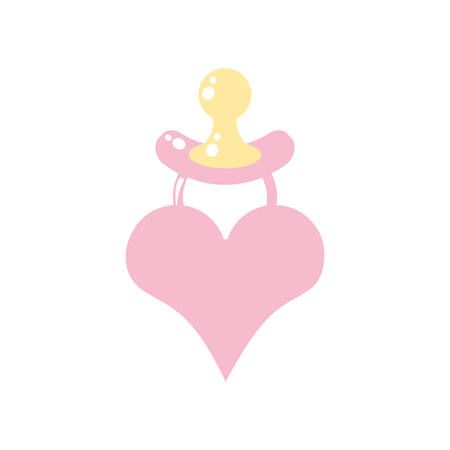What Is SIDS?
Sudden Infant Death Syndrome (SIDS) is the unexplained death of an otherwise healthy baby, typically during sleep. It is sometimes referred to as “crib death” because it often happens while the infant is in their crib. Despite extensive research, doctors and scientists still do not fully understand why SIDS occurs, making it a major concern for new parents.
SIDS by the Numbers
SIDS affects thousands of families each year. Here are some key statistics:
| Statistic | Details |
|---|---|
| Most Common Age | Between 1 and 4 months old |
| Peak Risk Period | Occurs most frequently during sleep |
| SIDS Cases Per Year (U.S.) | Around 3,400 infant deaths annually |
| Main Risk Factors | Sleeping position, overheating, unsafe sleep environment |
Why Is SIDS a Concern for Parents?
SIDS is particularly alarming because it happens suddenly and without warning. Unlike other medical conditions, there are no clear symptoms or early signs. This unpredictability makes it crucial for parents to follow safe sleep guidelines to reduce the risk as much as possible.
The Role of Sleep in SIDS Prevention
The way a baby sleeps plays a significant role in SIDS prevention. Safe sleep practices can help lower the risk and provide peace of mind for caregivers.
2. Safe Sleep Guidelines
Creating a safe sleep environment is one of the most important things you can do to protect your newborn from Sudden Infant Death Syndrome (SIDS). By following these simple but essential guidelines, you can reduce risks and ensure your baby sleeps safely.
Key Recommendations for Safe Sleep
The American Academy of Pediatrics (AAP) provides clear guidelines on how to create a safe sleeping space for your baby. Here are the key recommendations:
| Safe Sleep Practice | Why It Matters |
|---|---|
| Always place baby on their back to sleep | This is the safest sleep position and significantly reduces the risk of SIDS. |
| Use a firm crib mattress with a fitted sheet | A firm surface helps prevent suffocation and keeps your baby safe during sleep. |
| Avoid soft bedding, pillows, and stuffed animals in the crib | These items can pose a suffocation hazard, increasing the risk of SIDS. |
| Keep babys sleep area in the same room as parents for at least six months | Room-sharing (but not bed-sharing) has been shown to reduce the risk of SIDS. |
| Avoid overheating – dress baby in light sleep clothing | Dressing your baby appropriately prevents overheating, which is linked to an increased risk of SIDS. |
The Importance of a Safe Sleep Environment
Your babys crib should be free from anything that could obstruct their breathing. This means no bumpers, loose blankets, or extra pillows. Instead, opt for a wearable blanket or sleep sack if extra warmth is needed.
What About Co-Sleeping?
The AAP strongly advises against bed-sharing due to the increased risk of suffocation and accidental injury. Instead, placing your babys crib or bassinet next to your bed allows you to stay close while maintaining a separate, safe sleep space.
Tummy Time During the Day
While babies should always sleep on their backs, supervised tummy time during the day is essential for strengthening neck muscles and preventing flat spots on their heads.

3. The Role of Room Sharing
Room sharing—keeping your baby’s crib or bassinet in your bedroom—is one of the safest ways to sleep near your newborn while reducing the risk of Sudden Infant Death Syndrome (SIDS). The American Academy of Pediatrics (AAP) recommends room sharing for at least the first six months, and ideally up to one year. However, it’s important to note that room sharing is not the same as bed-sharing, which increases the risk of suffocation and SIDS.
Benefits of Room Sharing Without Bed-Sharing
Having your baby sleep in the same room as you, but on a separate sleep surface, provides several advantages:
| Benefit | How It Helps |
|---|---|
| Reduces Risk of SIDS | Studies show that room sharing can lower the risk of SIDS by up to 50%. |
| Makes Nighttime Feedings Easier | You can quickly respond to your baby’s hunger cues without having to go to another room. |
| Promotes Parental Bonding | Your baby feels comforted knowing you are close by, which can lead to better sleep for both of you. |
| Easier Monitoring | You can check on your baby throughout the night without getting out of bed frequently. |
How to Set Up a Safe Sleep Space in Your Room
A safe sleep environment is key when room sharing. Here’s how you can create a secure sleeping space for your newborn:
Selecting the Right Sleep Surface
- Use a crib, bassinet, or play yard: Ensure it meets current safety standards with a firm mattress and fitted sheet.
- Avoid soft bedding: Keep pillows, blankets, stuffed animals, and bumpers out of your babys sleep area.
- No inclined sleepers: Flat sleep surfaces are safest for newborns.
Positioning Your Baby’s Sleep Area
- Keeps the crib or bassinet close to your bed: This allows easy access for feeding and comforting without bed-sharing.
- Away from hazards: Ensure there are no loose cords, curtains, or blankets nearby that could pose a strangulation risk.
- Create a cool, smoke-free environment: A temperature between 68-72°F (20-22°C) and no exposure to secondhand smoke helps reduce SIDS risks.
Avoiding Common Room-Sharing Mistakes
A few common mistakes parents make when room sharing include:
- Bedding too close to baby’s sleep area: Keep adult bedding away from the crib to prevent accidental suffocation.
- Napping with baby on couches or armchairs: This increases the risk of SIDS and suffocation significantly.
- Lack of consistency: Try to keep bedtime routines consistent even when room sharing to encourage healthy sleep habits.
By setting up a safe sleep environment in your bedroom and following these guidelines, you can enjoy the benefits of keeping your baby close while ensuring their safety during sleep.
4. Temperature and Sleepwear Safety
Keeping your baby at a safe and comfortable temperature while they sleep is essential for reducing the risk of Sudden Infant Death Syndrome (SIDS). Overheating can be dangerous, so its important to create a sleep environment that keeps your baby warm without causing excessive heat.
Recommended Room Temperature
The ideal room temperature for a newborns sleep environment is between 68°F and 72°F (20°C to 22°C). A room that is too hot or too cold can make it difficult for your baby to regulate their body temperature.
| Temperature Range | Comfort Level |
|---|---|
| Below 65°F (18°C) | Too Cold – Add an extra layer or use a warmer sleep sack |
| 68°F – 72°F (20°C – 22°C) | Ideal Sleeping Temperature |
| Above 75°F (24°C) | Too Hot – Remove layers and ensure good air circulation |
Dressing Your Baby for Sleep
The general rule is to dress your baby in one more layer than you would wear yourself. Avoid thick blankets, heavy clothing, or hats while indoors to prevent overheating.
Safe Sleepwear Choices
- Onesies or Footed Pajamas: Choose breathable cotton pajamas to keep your baby comfortable.
- Sleep Sacks: These wearable blankets provide warmth without loose bedding.
- Avoid Hats & Extra Layers: Babies release heat through their heads, so keeping them uncovered helps prevent overheating.
Signs of Overheating
If your baby is too warm, they may show signs of overheating. Check their chest or back rather than hands or feet to determine their true body temperature.
| Signs of Overheating | What to Do |
|---|---|
| Sweaty neck or damp hair | Remove a layer of clothing or adjust the room temperature. |
| Flushed cheeks or red skin | Avoid heavy blankets and ensure proper airflow in the room. |
| Rapid breathing or fussiness | Dress your baby in lighter clothing and check for comfort. |
Tips for Maintaining a Safe Sleep Temperature
- Avoid Direct Heat Sources: Keep the crib away from radiators, heaters, and direct sunlight.
- No Heavy Blankets: Use a fitted sheet only—no loose blankets, pillows, or stuffed animals.
- A Fan Can Help: Using a fan in the room improves air circulation and reduces SIDS risk.
- Dress Lightly in Warmer Months: In summer, a light onesie or diaper-only sleep under a fan may be enough.
- No Electric Heating Pads: Never use heating pads, electric blankets, or hot water bottles in the crib.
A well-regulated sleeping environment helps ensure your baby stays safe and comfortable throughout the night. By following these simple guidelines on temperature control and sleepwear safety, you can reduce the risk of overheating and promote safer sleep for your newborn.
5. Breastfeeding and Pacifiers
Breastfeeding and pacifier use have both been associated with a reduced risk of sudden infant death syndrome (SIDS). Understanding how they help and incorporating them safely into your babys routine can provide additional protection while ensuring comfort for your newborn.
How Breastfeeding Reduces the Risk of SIDS
Studies have shown that breastfeeding, especially exclusive breastfeeding for at least the first six months, can significantly lower the risk of SIDS. The protective benefits may come from several factors:
- Improved Immune Function: Breast milk contains antibodies that help protect against infections, which are sometimes linked to an increased risk of SIDS.
- Easier Arousal from Sleep: Breastfed babies tend to wake up more easily from sleep, reducing the likelihood of deep, prolonged sleep states that might contribute to SIDS.
- Better Respiratory Health: Breastfeeding helps develop a baby’s airway and breathing patterns, which may reduce breathing difficulties during sleep.
The Role of Pacifiers in Preventing SIDS
Pediatric experts, including the American Academy of Pediatrics (AAP), recommend offering a pacifier at naptime and bedtime as a way to lower the risk of SIDS. While the exact reason pacifiers help is not fully understood, some possible explanations include:
- Aiding Airway Opening: Using a pacifier may help keep the airway open by positioning the tongue forward.
- Encouraging Lighter Sleep: Babies who use pacifiers tend to remain in lighter sleep states, making it easier for them to wake up if needed.
- No Need for Repositioning: Unlike loose blankets or stuffed animals, pacifiers do not pose suffocation risks when used correctly.
Best Practices for Safe Breastfeeding and Pacifier Use
If youre considering breastfeeding and introducing a pacifier to your baby’s routine, following these guidelines can maximize their benefits while ensuring safety:
| Practice | Recommendation |
|---|---|
| Start Breastfeeding Early | Aim to begin breastfeeding within the first hour after birth and continue exclusively for at least six months. |
| Avoid Forced Pacifier Use | If your baby refuses a pacifier, do not force it. Try again later if needed. |
| Delay Pacifier Until Breastfeeding is Established | If you are breastfeeding, wait until your baby is about 3-4 weeks old before introducing a pacifier to avoid nipple confusion. |
| No Strings or Attachments | Avoid attaching pacifiers to strings or clips that could pose strangulation hazards. |
| Keep Pacifiers Clean | Sterilize pacifiers regularly and replace them when worn out or damaged. |
| No Sweeteners on Pacifiers | Avoid dipping pacifiers in sugar or honey, as this can lead to tooth decay and other health issues. |
A Balanced Approach
The combination of breastfeeding and safe pacifier use offers significant benefits in reducing the risk of SIDS. While each family’s approach may vary based on personal preferences and circumstances, incorporating these practices into your babys routine can contribute to safer sleep and better overall health.


